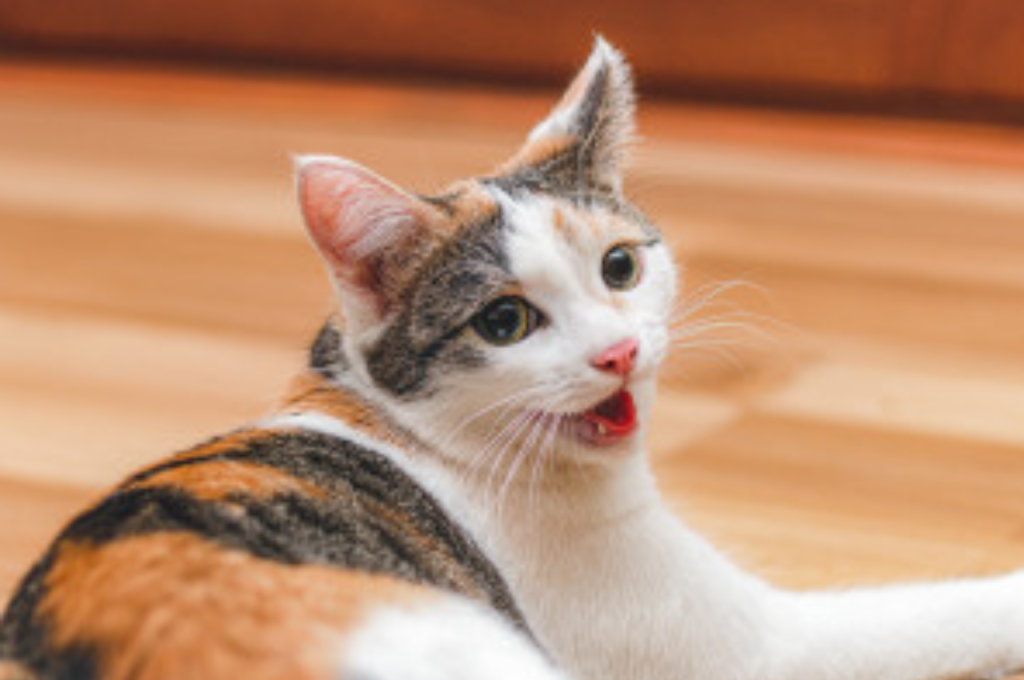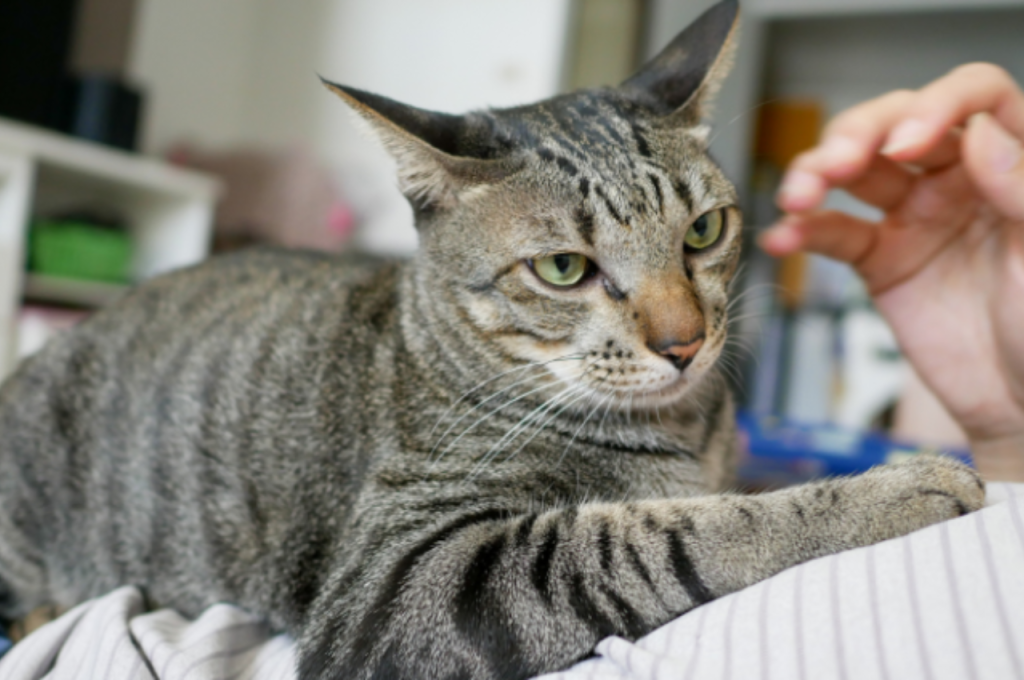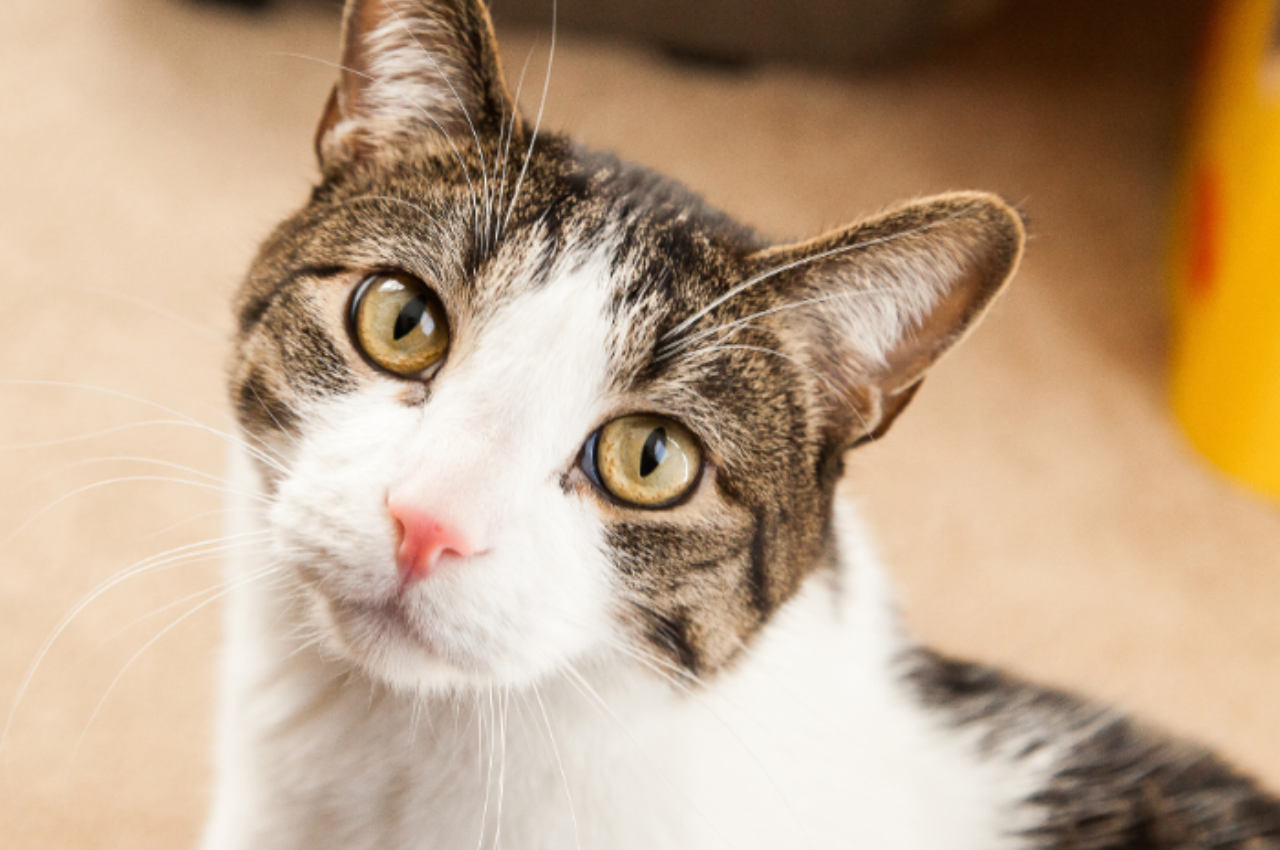When a cat gazes at you, it could be expressing curiosity, seeking attention, or longing for interaction. Cats are naturally curious creatures, and they often observe their surroundings, including their human companions, with interest. Staring can also be a way for cats to communicate their desire for interaction or to gauge your response. Additionally, prolonged eye contact between cats and their owners can strengthen the bond between them and convey feelings of trust and affection. Understanding your cat’s behavior and responding appropriately can help nurture a strong and fulfilling relationship between you and your feline friend.
Common Reasons for Cat Staring
Cat staring can be intriguing yet puzzling behavior for cat owners. Here’s a breakdown of why your cat may be staring at you:

Curiosity
Cats stare out of curiosity to explore their surroundings and the people they interact with.
Playfulness
Cat staring can also be a sign of playfulness as they observe movement or objects for potential fun.
Predatory Instincts
Cats may stare due to their predatory instincts, honing in on prey or detecting potential threats.
Body Language Interpretation
Body language interpretation is crucial when it comes to understanding your cat’s behavior. By paying close attention to their visual cues, you can gain insight into what they are feeling and why they are staring at you. Here are a few key body language indicators to help you decipher your feline’s intentions:
Pupil Dilation
When a cat stares at you with dilated pupils, it signifies excitement or potential aggression. Dilated pupils can indicate heightened arousal or interest in their surroundings.
Tail Position
A quivering or raised tail typically indicates a positive mood, while a low or tucked tail may suggest fear or submission. Observing your cat’s tail movements can give you valuable clues about their emotional state.
Ear Movement
Cats communicate through ear movements. Erect ears signal alertness and engagement, while flattened ears indicate stress or discomfort. It’s important to notice the position of your cat’s ears to gauge their level of comfort in a given situation.
Social and Emotional Factors
If you’ve ever wondered why your cat stares at you, it could be due to a combination of social and emotional factors. Cats are complex creatures that rely on a variety of behaviors to communicate their needs and feelings. Understanding these factors can help you decipher the meaning behind your cat’s intense gaze.
Bonding Behavior
In the realm of social factors, one explanation for your cat’s stare is bonding behavior. Cats can form strong attachments to their human companions, and staring is a way for them to establish and maintain this bond. When your cat stares at you, they are likely indicating their trust and affection towards you.
Moreover, staring can be seen as a sign of mutual respect and a desire for companionship. Your cat may use eye contact to convey feelings of warmth and familiarity, strengthening the bond between the two of you.
Territorial Tendencies
On the other hand, territorial tendencies can also play a role in your cat’s staring behavior. Cats are naturally territorial animals, and when they stare at you, they may be asserting their dominance or marking their territory.
By maintaining intense eye contact, your cat is displaying confidence and control. It’s their way of asserting their presence and reminding you that they are in charge. Understanding this aspect of your cat’s behavior can help you establish a harmonious living environment and ensure your cat feels secure and comfortable in their space.
Additionally, territorial staring can occur when the cat feels threatened or challenged. It is their way of warning you or other animals to back off. It’s important to be aware of your cat’s body language and respect their boundaries to avoid any potential conflicts.
Health Concerns
Have you ever wondered why your cat is staring at you with those intense eyes? While it may seem mysterious, there could be some health concerns that could be causing this behavior. As a responsible cat owner, it’s important to understand the possible underlying issues so that you can ensure the well-being of your feline friend.

Vision Problems
Cats, just like humans, can experience vision problems that may cause them to stare. If your cat seems to be staring blankly or has difficulty focusing on objects, it could be a sign of vision impairment. Cats may also stare at you to get your attention if they’re having trouble seeing certain things.
Some common vision problems in cats include:
| Vision Problem | Signs |
| Cataracts | – Cloudy appearance in the eyes- Difficulty seeing in dim light |
| Glaucoma | – Redness in the eyes- Squinting- Vision loss |
| Retinal degeneration | – Night blindness- Pupils that don’t respond to light |
Anxiety Issues
Cats can also stare as a result of anxiety issues. Stress and anxiety can manifest in various ways, and staring is one of them. When cats feel fearful or threatened, they may fixate their gaze on a specific object or person as a defense mechanism. It’s their way of remaining alert and ready to react if necessary.
- Separation anxiety when left alone for extended periods
- Territorial anxiety due to changes in the environment or new pets
- Fear-based anxiety triggered by unfamiliar situations or people
Recognizing the signs of anxiety in your cat can help you alleviate their stress and provide the necessary support. Remember that seeking guidance from a veterinarian is recommended to rule out any underlying medical conditions and to receive professional advice on managing your cat’s anxiety.
Communication Through Staring
Communication through staring is a common behavior among cats, serving various purposes. One such purpose is establishing dominance within their social group. Cats may stare at other animals or humans to assert their dominance or establish hierarchy. Additionally, staring can be a form of expressing affection or bonding. Cats may gaze at their owners to convey their love and trust. Understanding your cat’s body language and the context of their staring behavior is crucial for interpreting their intentions accurately. It’s essential to consider other cues such as body posture, ear position, and vocalizations to decipher their communication effectively.
Seeking Attention
Cats often stare at their owners as a way to seek attention. They might gaze intensely and hold eye contact in an attempt to engage their human companions. This behavior is their way of communicating their desire for interaction or indicating that they want to play or be petted.
Expressing Discomfort
On the other hand, prolonged staring can also serve as a form of expressing discomfort for cats. When feeling anxious or uneasy, a cat may fixate their gaze on their owner as a means of signaling distress. This could be a way for them to convey their need for reassurance or a sense of safety from their trusted human.
Training Techniques
When it comes to understanding why your cat stares at you, training techniques play a crucial role in shaping their behavior. By using effective methods, you can redirect your cat’s attention and encourage positive interactions, fostering a healthy relationship. Here are some proven training techniques to help you understand and address your cat’s staring behavior.
Positive Reinforcement
Positive reinforcement is a powerful training tool for modifying your cat’s behavior. When your cat stares at you and displays desired behavior, such as not scratching furniture, immediately reward them with treats, gentle petting, or verbal praise. By consistently associating positive experiences with desirable actions, your cat will learn to repeat the behavior.
Redirecting Behavior
Redirecting your cat’s behavior is important when they engage in staring that can be perceived as aggressive or anxious. When you notice your cat staring in a concerning way, gentle redirection can help. Distract your cat with a toy or a play session to shift their focus from the staring behavior. Additionally, creating a soothing environment with calming scents or soft music can help alleviate any stress or tension your cat may be experiencing.
When to Seek Professional Help
Seeking professional help for your cat’s staring behavior may be necessary if it is accompanied by other concerning signs or if you’re unsure about its underlying cause. Here are some situations where consulting a veterinarian or animal behaviorist may be warranted:
Persistent Aggressive Staring
Excessive and ongoing aggressive staring from your cat may indicate underlying issues.
- Increased tension in the home environment.
- Possible triggering events affecting your cat’s behavior.
- Visit a qualified veterinarian for assessment and advice.
Unexplained Behavior Changes
Sudden changes in your cat’s behavior could point to serious problems.
- Loss of appetite or excessive eating without reason.
- Uncharacteristic withdrawal or aggression towards you or others.
- Consult with a certified animal behaviorist for guidance.
Creating A Cat-friendly Environment
Cats are curious creatures, and when your feline friend is continuously staring at you, it might leave you wondering about the reason behind their intense gaze. ‘Creating a Cat-friendly Environment’ is crucial to understanding and addressing such behavior effectively.

Enrichment Activities
Enrichment activities are essential for providing mental and physical stimulation to your cat. This can include toys, climbing structures, and interactive games.
Safe Spaces
Safe spaces are areas where your cat can retreat when feeling overwhelmed or stressed. These spaces should have comfortable bedding and be located away from high-traffic areas.
Frequently Asked Questions
Certainly! Here are some questions about the cat staring at me:
Q. Why does my cat stare at me?
A. Cats stare as a sign of affection, seeking attention, or indicating hunger. It’s their way of communicating with you and expressing their emotions. Observing their body language alongside the stare can offer insight into their needs.
Q. Is my cat starting a form of communication?
A. Yes, cats use prolonged eye contact to convey messages. It can signal affection, a request for food or play, or a sense of security. Understanding their body language can help discern the reason for the stare and strengthen the bond between you and your feline companion.
Q. How can I respond to my cat’s stare?
A. You can react by engaging with your cat through gentle petting, offering a treat, or initiating play. Understanding the context of their stare, such as a longing for interaction or a request for food, allows you to respond appropriately and strengthen the bond with your pet.
Conclusion
To conclude, understanding why a cat stares at you is a combination of their instincts and their unique personalities. Whether it’s their way of communicating, expressing curiosity, or simply seeking attention, it’s important to pay attention to their body language and respond accordingly.
Remember to provide them with a safe and comfortable environment, and enjoy the special bond that can develop between you and your feline companion.
